Mathurine’s Sorrow
“Rarely have we seen in the history of New France a mother so stricken as Mathurine Leroux!”1 I don’t know about you, but the sentence caught my attention so I decided to delve into the background of Mathurine, my 9th great-grandmother on the Vadnais side of the family.
Mathurine was born on March 18, 1635 to Antoine Leroux & Jeanne (Jounoy) in La Rochelle, Aunis, France.2 This is the same port town that many of our ancestors sailed from on their trip to New France. She was baptized the same day at Sainte-Marguerite parish.

In 1652, at just 17 years old, Mathurine made the long voyage to New France as a Filles a Marier (marriageable girls).3 Upon her arrival there were around 2000 people in the colony; the vast majority of them male.4
Mathurine’s future husband, Gabriel Rouleau dit Sansoucy was about 37 years old when he emigrated from France in 1652.5 It is possible that he and Mathurine were on the same ship, but so far I’ve not seen any ship records for either of them.
The couple married in Quebec on August 16, 16526 and were residing in the Montmorency area (above Quebec City along the St. Lawrence River) when their first child, Louise was born on August 12, 1653.7 Mathurine was only 18 years old. Their second child, Jean would follow on March 4, 1655.8
Just over one year later, on August 26, 1656 the first of a number of tragedies struck when their home burned with both Louise and Jean losing their lives. The burial record for Jean reads, “…mort dans l’incendie du sa maison fire le soir du 26 de ce mois.” Translated: “… died in the fire of his house on the evening of the 26th of this month.”9 Louise’s burial record contains the same statement.10 Louise was just 3 years old and Jean only 17 months old.
At the time of the tragedy, Mathurine was 6 months pregnant with their 3rd child. I assume that it was in honor of the son they lost, that when the 3rd child, another son, was born on November 21, 1656, he was also named Jean.11
Over the next 16 years Mathurine would give birth to another 9 children: Anne born August 12, 1658, Pierre born March 14, 1661, Marie Anne and Guillaume, twins, born April 27, 1662, Catherine born March 24, 1664, Gabriel born July 15, 1665, Marie born June 14, 1667, Claude born February 14, 1669 and Joseph born May 10, 1672.12 By May 22, 1672, the day Joseph died, of the 12 children Mathurine had given birth to so far, only Marie-Anne (my 8th great-grandmother), Guillaume, Gabriel and Marie were still living.13 Possibly Pierre and Claude were still alive, but it is unlikely. I’ve been unable to find any other records for them.
On February 23, 1673 Mathurine’s husband Gabriel passed away. He was buried the following day in the Sainte-Famille Cemetery, Ile d’Orleans, Quebec, Canada.14 Five months later Mathurine gave birth to their 13th child, Pierre. Sadly Pierre only survived for 4 days.15
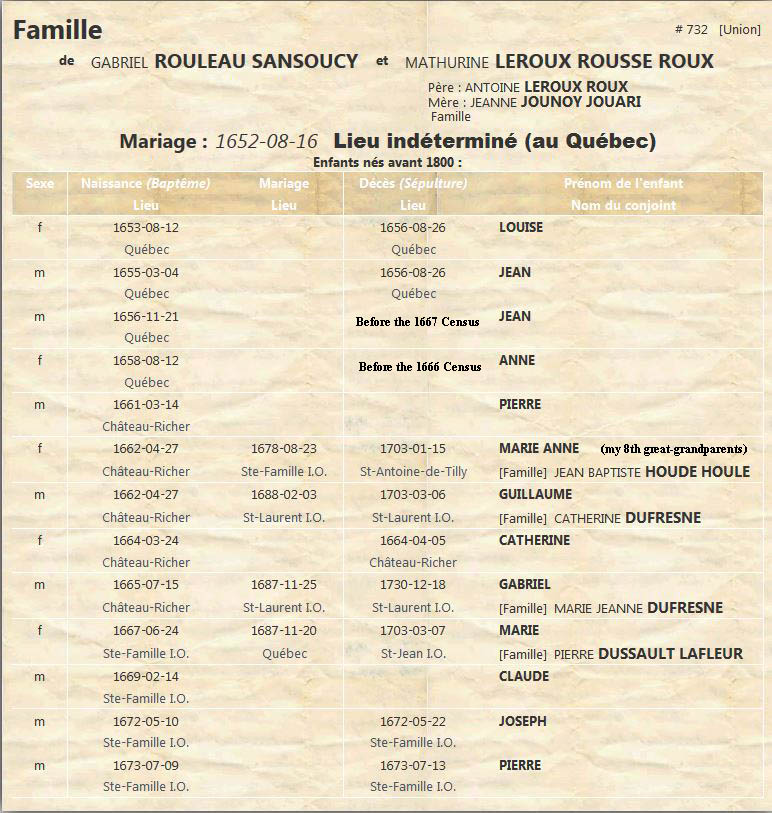
Thirty-eight year old Mathurine married 27 year old Martin Mercier on February 5, 1674 in the Church of Sainte-Famille on the Ile d’Orleans.17 Martin had emigrated from France in 1667.18
The couple had their first child, Louise, on December 29, 1674. Louise passed away 2 days later.19 Their only son Martin was born on March 30, 1676. He also passed away 2 days after his birth.20 Mathurine’s last pregnancy was a second set of twins, Jeanne and Marie, born on December 20, 1677. Both passed away that same day.21 At 42 years old Marie had given birth to 17 children: 9 boys and 8 girls.

On July 25, 1699, Mathurine’s husband Martin was on a trip to Montreal in his canoe when, for unknown reasons, he somehow fell out of it and drown. His burial record states that he, “Died by an unfortunate accident which is that going up to Montreal in a canoe, he fell into the water where he was drowned.” Martin was buried in the Saint-Enfant-Jesus de Pointe-aux-Trembles Cemetery in Montreal on July 27, 1699; Mathurine’s sorrow continued.23
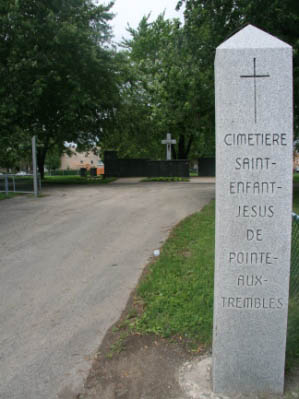
The St. Lawrence River, its tributaries and the many lakes were the “roads” these early settlers used to travel. Although the water provided the main mode of transportation, people then did not know how to swim. There are many drownings documented in the burial records.
For a very long period of time the population of Quebec was fairly isolated from the rest of the world. Those of European descent who had been born in Quebec, like the native population, had not been exposed to disease and as a result their immune systems were not as resilient. Up until 1700 there had been small outbreaks of 2 known diseases: typhus and influenza.
In 1702 there were approximately 18,159 habitants (a name unique to the French-Canadians/Quebecois) in the St. Lawrence Valley.24 The St. Lawrence Valley included the land on either side of the St. Lawrence River stretching from above Quebec City down to Montreal. The 3 main population areas were Quebec City, Trois-Rivieres and Montreal.
On October 19, 1702 an Indian chief from Orange (now Albany, New York) died at the Hotel-Dieu hospital in Quebec City. Shortly thereafter Sister Juchereau de St-Ignace, an analyst of the hospital, wrote an account of the chief’s illness that would eventually lead to the deaths of up to 6.5% of the habitant population in just 9 short months.25,26 His death signaled the start of a smallpox epidemic.
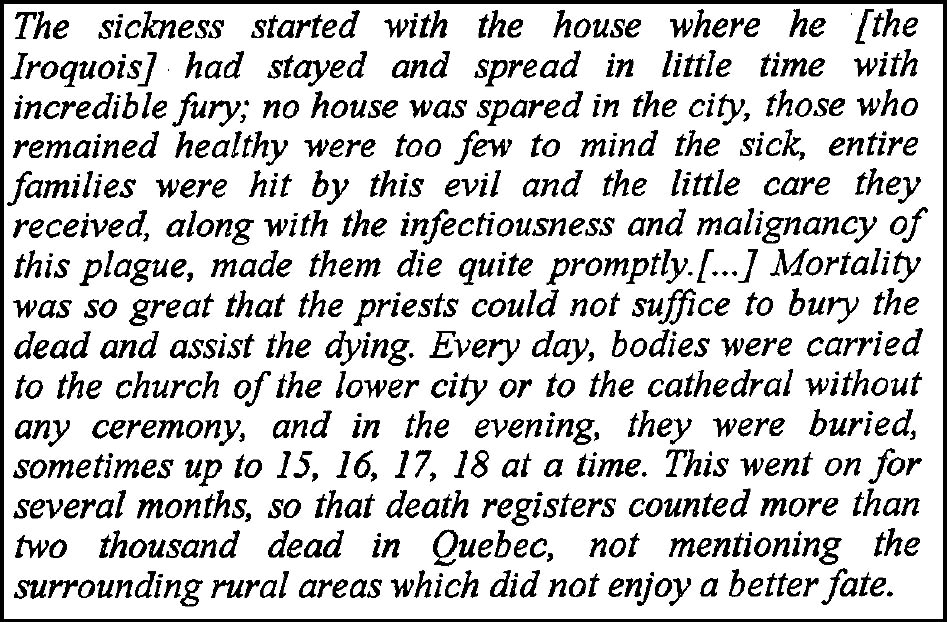
In the midst of what was occurring I am sure it seemed like 2000 people had died, but the number is inaccurate. In Quebec City there were around 260 deaths by the end of December and 5 months later they had recorded 761 deaths, when just the year before they had only recorded a total of 61 deaths.28,29 Quebec City alone lost about 13% of its population.30 The rest of the colony was not immune to the disease and before it came to an end around August 1703 about 1,300 habitants had died from the disease.31
I wish it were different, but Mathurine’s family suffered terribly during the smallpox epidemic. On January 15, 1703, Marie-Anne (Mathurine’s daughter and my 8th great-grandmother) died of smallpox.32 She was buried the same day at Saint-Antoine-de-Tilly, Lothbiniere, Quebec, Canada (a municipality on the south side of the St. Lawrence River just south of Quebec City). On March 6, 1703 Marie-Anne’s twin brother Guillaume died from smallpox.33 He was buried the next day in the Saint-Laurent Cemetery, Ile d’Orleans, Quebec, Canada. On March 7, 1703, the day of Guillaume’s burial, his sister Marie died from smallpox.34 She was buried March 8, 1703 at Saint-Antoine-de-Tilly, Lothbiniere, Quebec, Canada. Gabriel was now the last surviving child of Mathurine’s out of the 17 children she had carried.
Knowing how widespread and indiscriminate the epidemic was I knew I needed to look at Mathurine’s extended family. I was shocked at what I found. Marie, who had died on March 7, 1703 was followed by the remaining 5 of her 9 children within about a month.35 I’ve not found proof positive, but some claim that their father Pierre Dussault also died during the same time. Guillaume, who was married to Catherine Dufresne, was not present for the birth of his last child, Jean-Baptiste on March 21, 1703 and that child died just 18 days later.36 I’ve entered the information about these deaths in the chart below.

It was later during the epidemic that the analyst at Montreal’s Hopital General wrote, “This sickness, which in France is not nasty and which, at the most, kills but a few children, was so cruel in this country, that it removed a great number of persons of all ages, from one end of the colony to the other.”39 I believe Mathurine’s family is a prime example of how the epidemic ravaged the population.
Mathurine had been blessed with 37 grandchildren.40,41,42 Neither Marie-Anne, nor Gabriel lost any children during the smallpox epidemic. However, 15 of Mathurine’s 37 grandchildren did pass away before her death.
Mathurine had survived 2 husbands, 16 children and 15 grandchildren.
Mathurine died on February 1, 1708 and was buried on February 3, 1708 in the Saint-Laurent Cemetery, Ile d’Orleans, Quebec, Canada.44 According to her burial record she was about 75 years old at the time of her death.
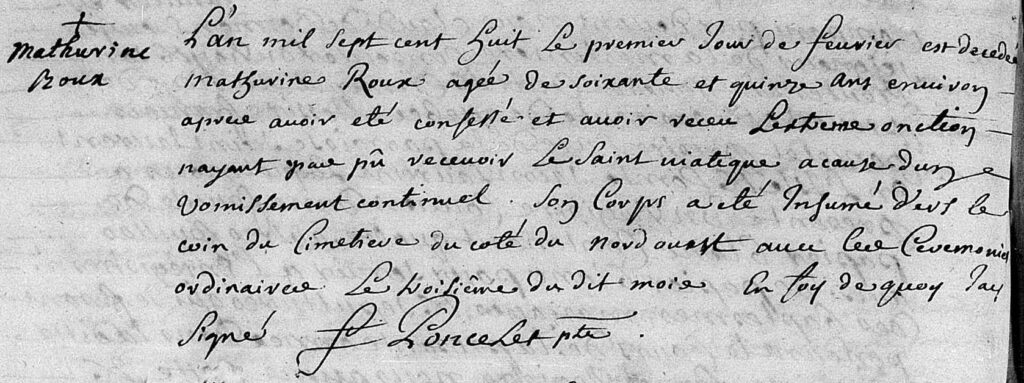
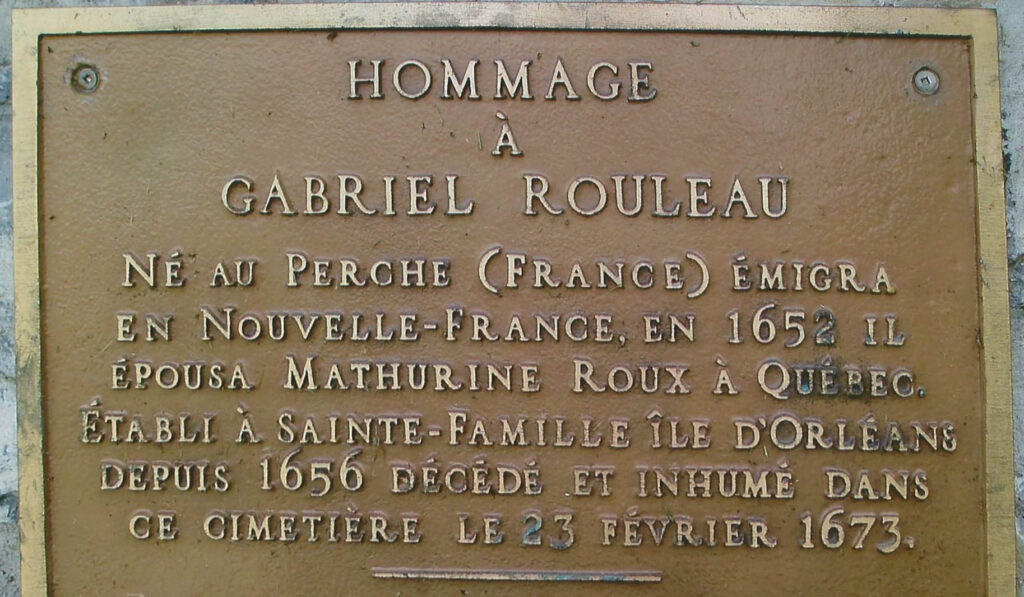
It reads: Tribute to Gabriel Rouleau Born in Perche (France) emigrated to New France, in 1652 he married Mathurine Roux in Quebec. Established in Sainte-Famille Ile d’Orleans since 1656 died and buried in this cemetery on February 23, 1673.
I think there is a lot to be taken away from the life of Mathurine Leroux. How brave of her to have journeyed to a new world with no family to support her. The strength, both mental and physical, across her lifetime was immeasurable. She persevered through a multitude of hardships far beyond what most of us will ever go through. I am sure she relied heavily on her faith and in it she found solace.
Thanks for visiting, come back soon,
Cindy
© 2022 Copyright by Cynthia Vadnais, All Rights Reserved
Mathurine’s Sorrow Read More »
